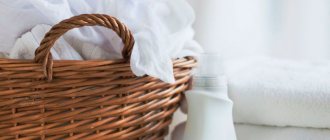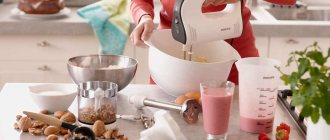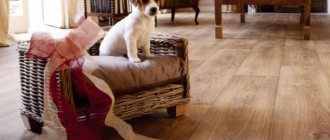Grease stains on kitchen surfaces are normal. During cooking, they can end up in the most unexpected places. Sometimes you even have to wash the ceiling.
But you can’t use the first product that catches your eye. It is important to consider what material the surfaces are made of so as not to harm their appearance.
Cleaning your kitchen of grease is very easy if you do it right.
As a rule, the parts closest to the cooking area suffer the most from fat. And this role is always occupied by kitchen furniture. It is made from several popular materials, each of which has its own characteristics. It is worth considering kitchens made of MDF, wood and plastic.
How to work with MDF
MDF kitchens are distinguished by the beautiful and durable material from which the surfaces are made. They require a thorough approach to cleaning, as they can be easily damaged. There are three ways to wash them from fat.
Mustard
A specially hand-prepared paste will allow you to wash away old grease from your favorite kitchen furniture. This method can also be used for household appliances and stone coatings.
How to achieve the result:
- Mix some mustard powder with water to form a thick mass.
- Apply it to all problem areas for a few minutes.
- Carefully remove any residue with a soft cloth soaked in warm water.
All the fat will remain on the rag. Therefore, you should only take fabric that can be thrown away.
Ammonia
A popular means of getting rid of contaminants since ancient times is ammonia. It can have a negative effect on some materials, but in this case it is harmless.
What to do:
- Dilute a liter of water with a spoon of ammonia.
- Fill a spray bottle with them.
- Spray onto all stained areas.
- Blot with a dry cloth.
This method cannot be used to clean a glossy kitchen, as this may cause unsightly liquid marks to form.
Alcohol, vinegar, lemon
An ideal option for modular kitchens with glossy finishes, which will suit the white color. It will not harm even low-quality materials, making it an almost universal means of removing dirt on kitchen cabinets and other surfaces.
How to proceed:
- Mix equal parts of vinegar, alcohol and lemon juice or grated zest.
- Blot with a soft cloth and wash off all dirty marks.
- Wipe with a clean cloth.
Mustard powder
Mustard powder will help clean furniture and kitchen appliances from grease deposits:
- Wipe contaminated areas with a soft, damp cloth.
- Sprinkle mustard powder generously over the oily areas and leave for a couple of minutes.
- Wipe the surfaces with a clean napkin, removing mustard, grease, soot and soot.
Using mustard powder you can clean the refrigerator, electric stove, and cabinet fronts. However, this method is not suitable for wooden surfaces.
How to clean grease from kitchen utensils at home
Keeping the kitchen clean is one of the main tasks of housewives, so the question of how to clean grease from kitchen furniture at home is always relevant. Home and professional remedies will help clean surfaces and restore their freshness. However, in order not to damage the headset, it is important to know what material it is made of and take into account the features of caring for it.
The article contains useful tips and effective methods that will help remove grease from glossy, plastic and wooden furniture in the kitchen.
Choosing a set according to interior design
The kitchen set is the most important element of the room. Therefore, if you want to decorate a room in a certain design style, it is important to choose the right furniture. The following photos show examples of matte kitchens in various interiors.
The easiest way is if you are planning to decorate a matte kitchen in a classic style . Choose natural (for example, wood) or pastel, light shades. White, beige, and cream work well. Pay attention to details too. A subtle patina, matte or metallic handles, and no fussy lines are what you need.
Baroque allows more freedom in the design of matte kitchens. We recommend combined sets - with matte facades and glass cabinet doors. Please note that such furniture looks good only in spacious kitchens.
For the Provence style, light sets with simple lines are suitable. Pay attention mainly to natural materials: wooden panels, stone and wood countertops. In this case, the room will look perfect.
The same rules are true for country-style kitchens. True, if Provence allows the use of various pastel shades, then we recommend choosing exclusively natural tones: beige, brown, light green.
There is an opinion that matte kitchens do not look high-tech. This is not true: the main thing is to choose the right shape and color of the furniture. Pay attention to straight headsets without curls or complex shapes. In this case, all shades of black and gray look great.
However, you shouldn’t give up on bright colors either: if you manage to play with them correctly, the result will undoubtedly please you.
Matte kitchens are ideal for lofts: gloss is too pretentious for it. Here you have complete freedom to choose a shade - the main thing is that it matches well with the rest of the interior. Loft allows for experimentation, so don't be afraid of bold combinations.
Refined Art Deco also looks unusual with matte surfaces. Avoid too bright colors and be guided by general style ideas and the kitchen will turn out very beautiful.
However, the list of styles can be almost endless - you can choose a matte set for almost any one that will fit into the interior.
As you can see, matte kitchens are perfect for almost any room: they are beautiful, easy to clean and come in a wide variety of materials and colors.
After cooking, greasy drops are found in the most unexpected places. Because of this, you have to regularly clean the kitchen facades from grease and dirt. When starting cleaning, it is important not to spoil the appearance of the furniture. This can only be done if you carefully consider the choice of products and take into account the material of the surfaces being cleaned.
How to care for a matte surface
To keep your kitchen looking fresh and attractive longer, you need to keep it clean. The rules for caring for matte surfaces directly depend on the base material. There are also several general recommendations, following which you can extend the life of your kitchen set. The list of the most important tips for caring for matte facades is as follows:
- Do not use abrasive or alcohol-containing detergents. The former contribute to the appearance of visible defects; thanks to the latter, the color of surfaces noticeably fades;
- Do not use sponges and brushes. These tools are too rough for matte panels. Furniture should be washed with soft cloths or microfiber products. Some housewives successfully use paper towels and napkins;
- if we are talking about a matte set made of natural wood, you can use a steam generator to care for it;
- Despite the practicality of muted tones, you should not make the room too busy. Some base materials have a porous structure and are well saturated with fat and food coloring. It will be very difficult to remove such stains without damaging the furniture;
- After cleaning, all washed surfaces should be wiped dry. This simple action will extend the life of the base material of the matte headset.
Color palette
There is an opinion that the color range of matte kitchen surfaces is smaller than glossy ones. In fact, this is not the case - it all depends on the coating material. When choosing a shade for a specific kitchen set, you should consider:
- room dimensions,
- location and number of windows,
- general stylistic concept.
- For example, for a small kitchen you should not choose dark matte surfaces. There is no need to use variegated colors - a small room will look overloaded. The modern fashion trend is delicate white and creamy shades. An elegant kitchen set in a pearl or milky tone will look good.
- For more spacious rooms, it is permissible to adopt combined solutions: for example, a combination of black and white. For example, you can decorate the bottom drawers and cabinets in black colors, and place white cabinets on top. Contrasting elements look fashionable and are universally suitable for many styles.
- For classic interiors, as well as rustic styles, wood shades - light and dark - are widely used. It can be beige, coffee, chocolate, wenge, oak, brown. In a matte finish, such facades look ideal.
- Matte color solutions look good - blue, blue, lilac, pink, lavender, pistachio, yellow shades. This palette, characterized by muted light reflection, is an excellent option for decorating a kitchen in the Provence style. This direction needs a slightly faded background. Glossy and colorful splashes are necessary to create a romantic atmosphere of the French province.
- The spacious kitchen can be furnished with black matte furniture. Thanks to such an elite environment, the kitchen will look original and stylish. However, we will immediately warn you that caring for black furniture is more difficult. Handprints and traces of kitchen dirt remain equally visible on both matte and glossy surfaces. Such furniture requires more careful care using special products. Otherwise, the kitchen will lose its grandeur over time. Choose the color of the furniture in accordance with the design features of the room. Bright colors can always be complemented with flooring or aprons made of plastic or triplex.
How to care for MDF furniture in the kitchen
To preserve the beauty of the kitchen, proper care of MDF furniture plays an important role. It usually comes down to preventing the formation of persistent contaminants.
It will be easier to maintain cleanliness if you follow these rules:
- Keep paper towels handy and immediately clean up spills and spills.
- Use separate sponges and rags for dishes and furniture.
- Carry out general cleaning once a month so that the grease does not turn into stubborn plaque that is difficult to remove.
We suggest you familiarize yourself with HG Sticker Remover 300 ml
Regular use of these recommendations for caring for your kitchen set will help keep it in the best condition, and will also save time, money and effort on cleaning complex stains.
Benefits of a matte kitchen
Let's look at the advantages of matte facades, which allow them to be leaders in the kitchen furniture segment:
- elegant and noble appearance, the ability to choose furniture to suit any interior style;
- ease of maintenance - dirt and fingerprints are less noticeable on matte surfaces than on glossy ones. The matte façade is easier to clean;
- scratches are less noticeable (compared to glossy kitchens);
- wide selection of manufacturing materials;
- absence of glare typical of glossy surfaces.
However, matte facades also have some disadvantages. This is a less narrow palette of colors than glossy surfaces. In addition, matte surfaces do not fit into all modern interiors.
Pollution prevention
To avoid having to make excessive efforts to clean the kitchen and remove old grease, follow these simple recommendations:
- Use a hood when cooking.
- Wipe surfaces daily with a damp sponge soaked in a detergent solution.
- Do not use hard sponges, metal brushes or other abrasive materials and substances to wash facades.
- Polish glossy and wooden surfaces well several times a week. Also, remember that some cleaners leave unsightly marks on polished surfaces, so be careful when choosing them.
We suggest you familiarize yourself with How to clean grease from a stove
Home methods and professional products will help you remove fat deposits from kitchen surfaces. Before cleaning, make sure that the chosen method will not damage the material of the headset.
General recommendations
- The most important rule is: ALWAYS test the cleaner on an inconspicuous area before cleaning your kitchen. Treat it, then wipe clean and dry, wait 1-2 minutes and evaluate whether the color of the coating has changed, whether the shine has disappeared, etc.
- A greasy coating on kitchen furniture is a mixture of dust with fumes and a tiny suspension of fat that forms during cooking. The older the plaque, the more difficult it is to get rid of it. Therefore, the optimal schedule for “general” cleaning of the kitchen from grease is 1-2 times a year, “major” cleaning is every 2 months using mild products and, of course, when the need arises.
- To clean hard-to-reach areas, crevices, or decorative trim, use a toothbrush dipped in the cleaner from our article. You can also clean narrow crevices with a knife wrapped in cloth.
- Do not use harsh abrasives; only baking soda, a soft toothbrush, or the hard side of a regular foam sponge are acceptable. This is especially true for wooden kitchens, as well as any painted furniture without a top protective coating.
- When cleaning the kitchen, it is better to use a new sponge with a clean abrasive side. An old, greasy sponge can do even more damage.
- At the end of cleaning, it is advisable to wipe the kitchen: clean with a damp microfiber cloth and dry with a clean, dry microfiber cloth. This way you will avoid streaks and residues of the cleaning product itself.
- When cleaning the kitchen, pay special attention to the cabinets above the stove.
Furniture care: how to wash a kitchen made of MDF, plastic and chipboard
Improper care and use will quickly ruin even furniture made from high-quality materials using excellent fittings.
But, if you adhere to the rules of care and operation set out in this article, then you can be sure that your custom-made kitchen or custom-made wardrobe will serve you for many, many years.
There is a whole list of products that are strictly prohibited for use in the care of any furniture materials, both MDF and natural wood.
List of products prohibited for use in furniture care.
1. Products with alcohol: methyl, propyl and others. Ethyl alcohol concentrate is also prohibited; only a weak solution is allowed and only for plastic facades. 2. Abrasive materials: scrapers, knives, spatulas, brushes, soda, etc. 3. Steam cleaner (suitable only for kitchens made of natural wood). 4. Chlorine, sodium, alkali and acid-containing cleaning products. 5. Toothpaste, vinegar, vegetable oil, soda, and other folk remedies.
It is also not recommended to use products like “Mr. Muscle”, etc., to clean surfaces. Facades may change color or acquire an unpleasant odor.
Caring for natural wood furniture.
Cleaning surfaces made of natural materials is carried out in several stages:
1. To clean the facades from grease and water droplets, use a sponge with a weak soap solution made from ordinary soap. If the kitchen surface made of natural solid wood is heavily soiled, it is permissible to use a steam generator.
IMPORTANT: The steam generator is strictly prohibited for cleaning any surfaces other than natural wood!
2. After applying the soap solution, the surface must be wiped with a damp soft sponge to remove soap stains.
3. The next step is wiping the surfaces with a dry microfiber cloth.
4. If desired, you can apply a special wax polish to add shine and additional protection.
Caring for a kitchen made of chipboard or TSS Cleaf
Chipboard, like TSS, is a board that is resistant to external influences; however, it also requires special handling during maintenance.
1. Use a damp soft sponge with a mild soap solution (ordinary soap) to remove dirt from the surface
Do not use steam cleaners or alcohol-containing products to clean chipboard and TSS surfaces.
2. Remove soap stains from the surface using a soft, damp sponge
3. Wipe the chipboard and TSS surface dry with a dry microfiber cloth.
We invite you to familiarize yourself with DIY liquid dish soap
Caring for a kitchen made of film MDF.
Care for products made from film MDF is carried out as follows:
1. Use a damp soft sponge with a weak soap solution (ordinary soap) to wipe the surface of the facade from greasy spots and stains
Never use a steam cleaner to clean the surfaces of MDF facades. Additionally, you can use cleaning products containing a weak solution of ethyl alcohol. We recommend applying the solution to the inner surface first. If there is no negative reaction, you can use it to clean facades.
2. Using a soft damp sponge, remove soap stains from the surface.
3. Wipe the surface dry with a dry microfiber cloth.
4. Apply a time-tested furniture wax polish to protect the surface.
Caring for a matte MDF kitchen.
Furniture made from matte MDF is washed in the same way as kitchens made from regular film MDF. But in this case it is not recommended to use polish.
Caring for kitchen and furniture made of glossy MDF
Gloss furniture must shine! To maintain the impeccable appearance of the glossy facade, you must adhere to the following rules:
1. You can only care for a glossy surface using a mild soap solution. Any detergents or cleaning products are strictly prohibited.
2. Be sure to remove soap stains after washing. Use a dry soft sponge or microfiber cloth for this.
3. Give your furniture a shine with Pronto furniture polish.
Caring for plastic products
Caring for kitchens made of plastic is similar to caring for products made from film MDF. The only thing you can use is weak detergents like “Mr. Muscle” based on alcohol and folk remedies made from natural citric acid. We draw your attention to the fact that even plastic that is insensitive to external influences cannot be wiped with products containing chlorine, sodium or acid-containing products.
Caring for painted MDF products
In the case of such a fragile material as painted MDF, any detergents other than warm soapy water are strictly prohibited for cleaning. The surface can only be washed with a soft sponge or microfiber cloth.
With proper care, you can maintain the flawless appearance of the facades of your new custom-made furniture for a long time.
Safe products and tools
A melamine eraser sponge works well to remove greasy deposits from furniture.
When trying to clean an MDF kitchen set, even from old deposits, you should not use abrasive or aggressive substances. They will damage the delicate surface. The following tools are prohibited for cleaning:
- hard brushes;
- metal scourers;
- sponges made of hard material;
- hard scrapers;
- rough rags.
Compliance with this rule will help prevent the appearance of scratches and roughness, which will irrevocably spoil the appearance of glossy facades.
It is better to use an old rag or soft washcloth. Positively proven in gentle cleaning:
- microfiber products;
- silicone scrapers;
- melamine sponge;
- paper towels;
- cotton swabs and disks.
A careful approach to choosing tools for washing and removing dirt will eliminate unpleasant consequences and preserve the beauty and newness of the cabinets.
Safe chemicals for washing MDF furniture
Among household chemicals, Mr Muscle is best suited for kitchen furniture.
To begin with, you can try to remove dirt with products that you already have in your household: dishwashing gel or glass cleaning compound. Impregnated wet wipes or liquid and laundry soap are also suitable. If this does not help, move on to using stronger household chemicals.
To understand the assortment presented on store shelves, you need to carefully read the composition on the labels. It is strictly forbidden to use the following for cleaning MDF surfaces:
- concentrated solvents;
- alcohol-containing liquids;
- cleaning abrasive powders;
- solutions with a high content of acids and alkalis.
The most effective and safe for people are: Mr. Muscle, Cillit Bang, Shumanit, etc. All of them are tested during production, so they have minimal impact on health.
A liquid or creamy detergent structure is preferable as it does not contain hard, scratchy particles.
Folk remedies for removing grease in the kitchen
Soda, vinegar and citric acid are the most common remedies for greasy deposits
. In order to avoid allergies to chemicals, you can try to wash MDF kitchen facades using environmentally friendly methods. Traditional cleansing recipes are economical and time-tested, so it’s worth trying to use them in everyday cleaning.
The most effective formulations:
- mustard powder with water until a creamy slurry forms. Cover the problem area for 10-15 minutes. Then remove with a paper towel and rinse with warm water. Mustard will dissolve fat well. Use with caution on varnish and glossy surfaces.
- ammonia with water in a ratio of 1 to 100. Pour the resulting solution into a spray bottle and spray all contaminated areas. Do not rinse, wipe dry with a soft cloth. Universal cleaning liquid, ideal for almost all surfaces.
- vinegar and lemon juice with vodka in equal proportions, add grated zest to enhance the aroma. This option is suitable for removing medium dirt from glossy white coatings. Helps get rid of mild lime deposits from hard water. Refreshes the air in the room, also eliminating unpleasant odors.
- Grate the laundry soap Place the resulting slurry on the greasy stain, gently rub with a sponge, and leave to dissolve for 20 minutes. After this, rinse thoroughly with warm water. This method has proven itself positively on matte facades.
- baking soda and hydrogen peroxide to the consistency of thick sour cream. Apply to the treated area and allow to dry completely. Then remove with a soft brush, then wipe with a damp cloth. Has an antibacterial effect. Fights mold.
Do not intensively rub kitchen surfaces or use sharp objects when removing plaque, so as not to cause mechanical damage to glossy and varnished coatings.











